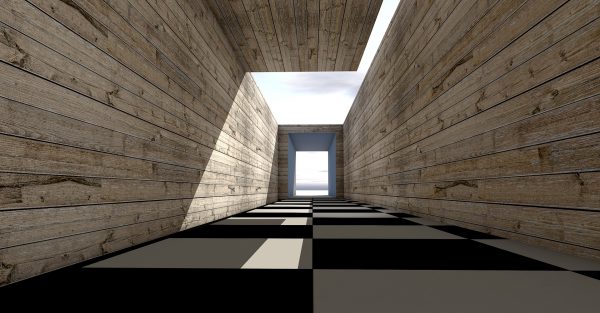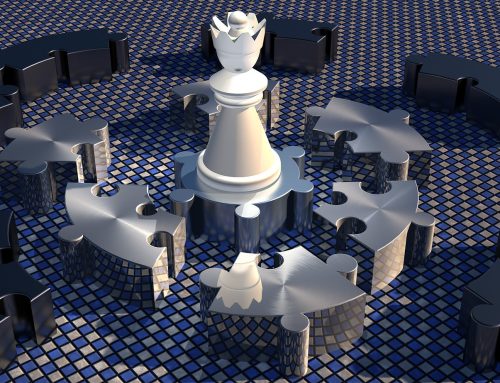Wie Sie noch realistischere Renderings erzeugen können.
Im Laufe der Zeit ist das Interesse an CG stetig gewachsen und es lassen sich immer professionellere Renderings beobachten. Oft sieht man erstaunliche Szenen, die aus irgendeinem Grund immer noch nicht ein fotorealistisches Niveau erreichen trotz perfekter Beleuchtung, Texturen und Topologie in ihren Modellen.

Aber etwas stimmt immer noch nicht und Sie sind nur selten realistisch. In dem folgenden Beitrag möchten wir ihnen ein paar Tipps mit auf den Weg geben, wie Sie perfekt gerenderte Bilder und Cubes loswerden und sie unvollkommen aussehen lassen.
Schärfentiefe ist eine sehr wichtige Sache, die Sie tun können, um ihre Renderings realistischer zu gestalten. Fast jedes echte Foto hat es. Selbst wenn Sie ein Bild mit ihrem Smartphone machen, konzentriert es sich auf etwas. Manchmal merkt man es kaum. Aber es ist immer da.
Blender`s Kamera hat Tiefenschärfe eingebaut. Scrollen Sie einfach nach unten zur Registerkarte „Schärfentiefe“ und stellen Sie die „Blende“ auf „F/Stop“ und stellen Sie die F/Stop-Nummer so ein, wie Sie das gewünschte Ergebnis erreichen. Wenn Sie keinen leeren Slider verwenden möchten, können Sie einfach den Distance-Slider einstellen.
Fokuslänge.
Fokuslänge wird nicht immer benötigt, aber manchmal kann sie einem Rendering wirklich helfen. Je höher Sie es setzen, desto weiter sieht ein Objekt aus. Jedes Kameraobjektiv hat eine eingestellte Fokuslänge. Standardmäßig ist Blender`s Camera auf 35mm eingestellt, was eine gute Voreinstellung darstellt. Es ist eine sehr gebräuchliche Fokuslänge. Aber nicht ideal für viele Situationen.
In diesem Beitrag werden wir nicht weiter auf verschiedene Fokuslängen eingehen, da dies den Rahmen sprengen würde. Im Internet finden Sie viele interessante Beiträge dazu.
Drittel-Regelung.
Die Drittel-Regel trägt nicht gerade zum Realismus bei, aber sie verbessert sicherlich die Qualität, also schließen wir sie trotzdem mit ein.
Die Drittel-Regel gibt es schon seit etwa dem 18. Jahrhundert und es ist immer noch so nützlich wie damals. Die Drittel-Regelung teilt das Bild grundsätzlich in neun gleiche Teile und dann setzt man den Hauptfokus der Szene auf eine der vier mittleren Ecken.
Blender hat unter dieser Registerkarte in den Kameraeinstellungen eine Drittel-Regelung.
Die Fokussierung des Bildes auf einen der 4 Punkte bringt Interesse und Energie in das Bild. Es gibt viele andere Kompositionsregeln wie die Drittel-Regelung, die ebenfalls wichtig sein können.
Linseneffekte.
Linseneffekte sind im Grunde genommen Fehler in einer Kamera. Fotografen versuchen oft, ihnen aus dem Weg zu gehen, um ein perfektes Bild zu bekommen. Aber als CG-Künstler versuchen wir genau das Gegenteil zu tun. Das ist es, was CG schwer macht. Mit allen Unvollkommenheiten. Hier ist eine Liste der häufigsten Effekte:
- Chromatische Abberation
- Vignettierung
- Bloom
- Streulichtblenden
- Blendung
- Motion Blur
- Lens Distortion
- Dust und Scratches
Und das sind nur einige wenige. Viele dieser Effekte sind direkt in Blender`s Compositor eingebaut. Andere müssen in Photoshop oder Gimp hinzugefügt werden. Suchen Sie in Google nach diesen Effekten und erfahren Sie, warum Sie auftreten und wie man sie erstellt. Wenn Sie diese Effekte beherrschen, sind Sie auf dem besten Weg zu einem fotorealitischen Rendering.
Textur Maps sind für die Erstellung von Materialvariationen gedacht. Es gibt viele verschiedene Arten von Maps. Aber die häufigsten sind Displacement, Normal und Specular. Um diese Maps zu erstellen, müssen Sie ein Programm zur Erstellung von Textur Maps kaufen. Empfehlenswert sind Crazybump und Knald. Es gibt auch einige kostenlose Alternativen, aber die Ergebnisse lassen regelmäßig zu Wünschen übrig.
Die Verwendung von Textur Maps ist wahrscheinlich das Wichtigste für ein realistisches Rendering. Sie fügen mehr Details hinzu, als es die Modellierung wahrscheinlich je tun wird.
Anfasen.
Sehen Sie sich die Objekte um Sie herum an. Alles hat zumindest eine sehr kleine Fase. In Blender können wir dies durch Fasen mit CTRL-B oder durch Hinzufügen eines Fasenmultiplikators duplizieren. Selbst wenn sie es auf eine sehr kleine Fase einstellen, wird es helfen.
Wir hoffen, dass ihnen dieser Artikel gefallen hat. VisCircle wünscht ihnen noch einen schönen Tag.


